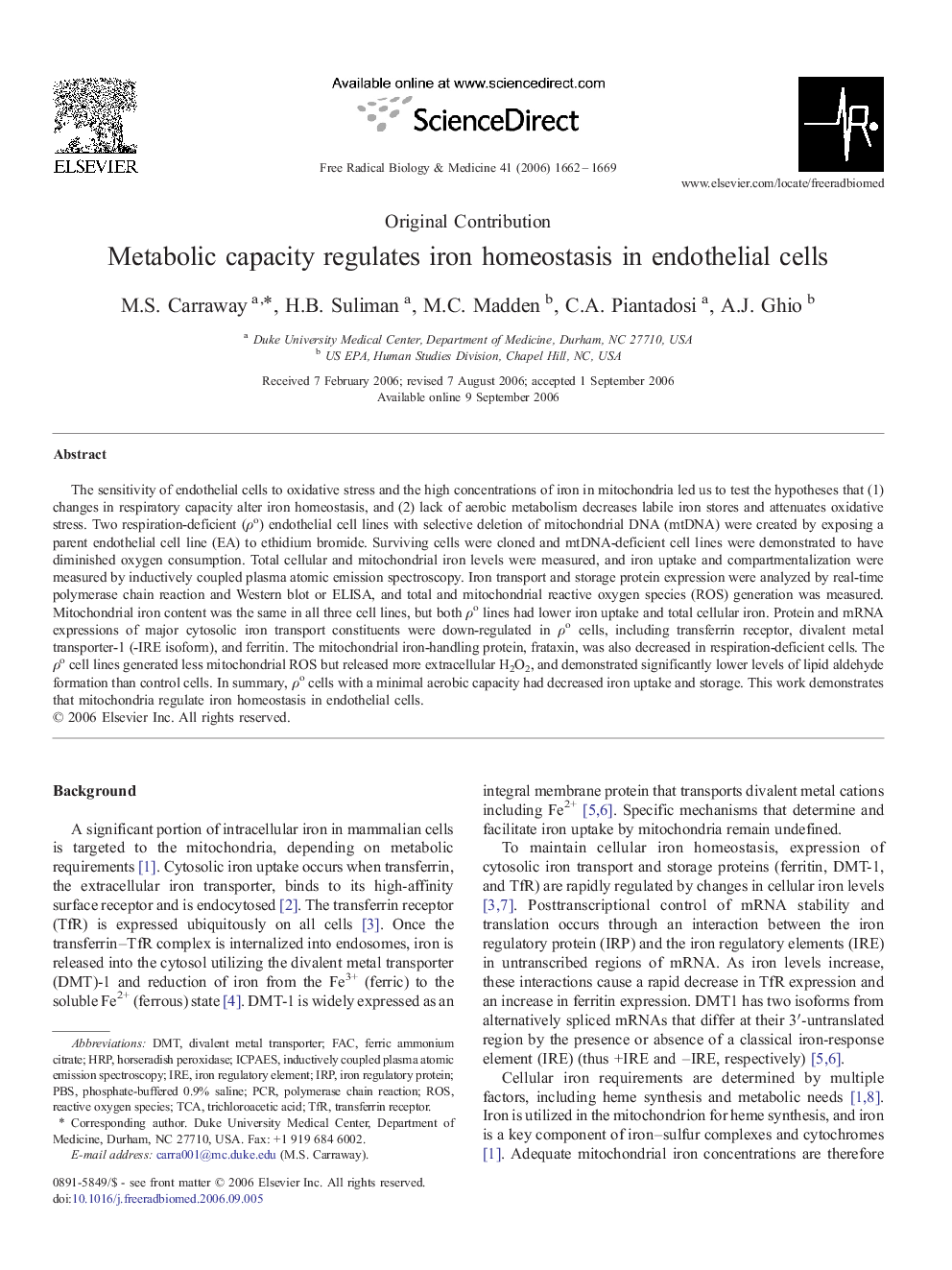| Article ID | Journal | Published Year | Pages | File Type |
|---|---|---|---|---|
| 1911776 | Free Radical Biology and Medicine | 2006 | 8 Pages |
The sensitivity of endothelial cells to oxidative stress and the high concentrations of iron in mitochondria led us to test the hypotheses that (1) changes in respiratory capacity alter iron homeostasis, and (2) lack of aerobic metabolism decreases labile iron stores and attenuates oxidative stress. Two respiration-deficient (ρo) endothelial cell lines with selective deletion of mitochondrial DNA (mtDNA) were created by exposing a parent endothelial cell line (EA) to ethidium bromide. Surviving cells were cloned and mtDNA-deficient cell lines were demonstrated to have diminished oxygen consumption. Total cellular and mitochondrial iron levels were measured, and iron uptake and compartmentalization were measured by inductively coupled plasma atomic emission spectroscopy. Iron transport and storage protein expression were analyzed by real-time polymerase chain reaction and Western blot or ELISA, and total and mitochondrial reactive oxygen species (ROS) generation was measured. Mitochondrial iron content was the same in all three cell lines, but both ρo lines had lower iron uptake and total cellular iron. Protein and mRNA expressions of major cytosolic iron transport constituents were down-regulated in ρo cells, including transferrin receptor, divalent metal transporter-1 (-IRE isoform), and ferritin. The mitochondrial iron-handling protein, frataxin, was also decreased in respiration-deficient cells. The ρo cell lines generated less mitochondrial ROS but released more extracellular H2O2, and demonstrated significantly lower levels of lipid aldehyde formation than control cells. In summary, ρo cells with a minimal aerobic capacity had decreased iron uptake and storage. This work demonstrates that mitochondria regulate iron homeostasis in endothelial cells.
